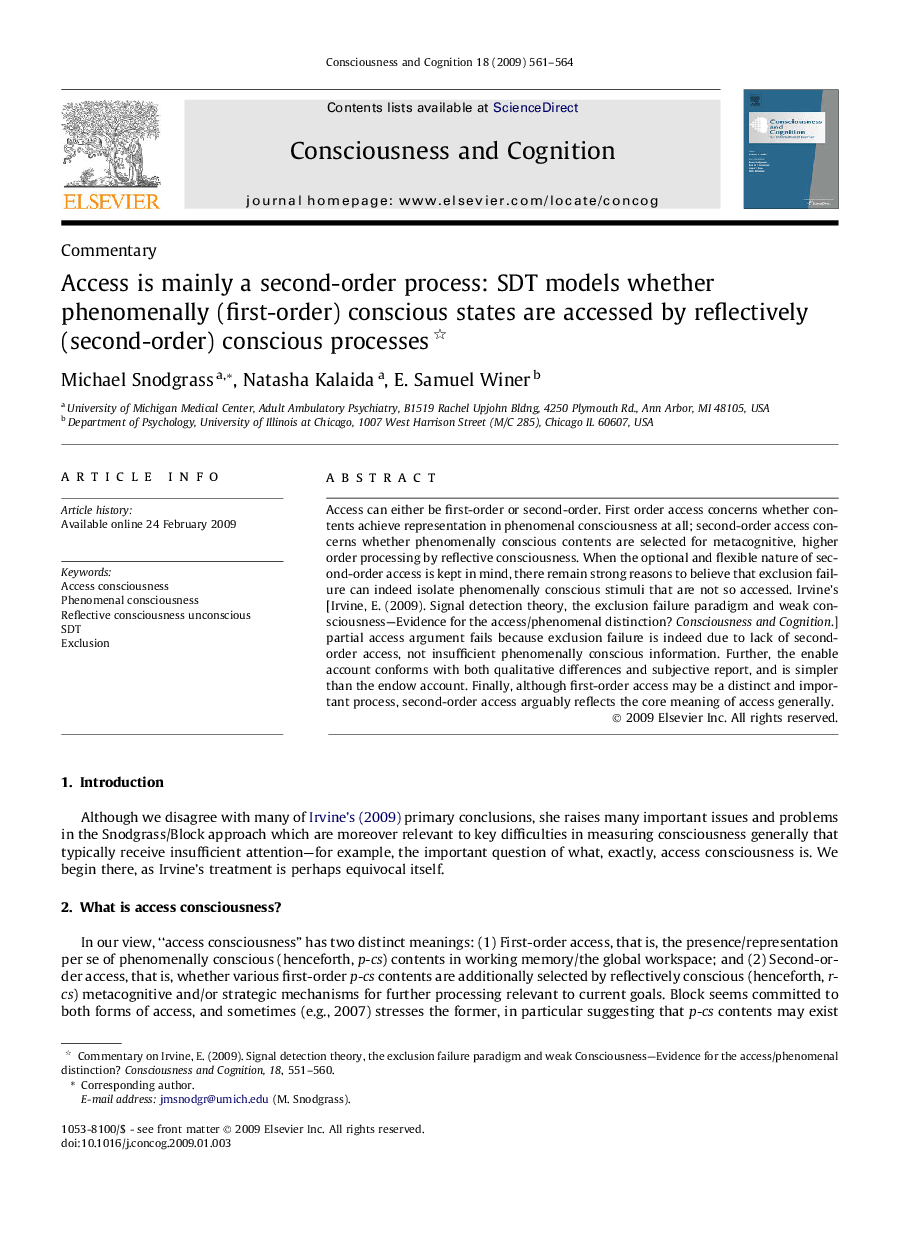| کد مقاله | کد نشریه | سال انتشار | مقاله انگلیسی | نسخه تمام متن |
|---|---|---|---|---|
| 927762 | 922275 | 2009 | 4 صفحه PDF | دانلود رایگان |

Access can either be first-order or second-order. First order access concerns whether contents achieve representation in phenomenal consciousness at all; second-order access concerns whether phenomenally conscious contents are selected for metacognitive, higher order processing by reflective consciousness. When the optional and flexible nature of second-order access is kept in mind, there remain strong reasons to believe that exclusion failure can indeed isolate phenomenally conscious stimuli that are not so accessed. Irvine’s [Irvine, E. (2009). Signal detection theory, the exclusion failure paradigm and weak consciousness—Evidence for the access/phenomenal distinction? Consciousness and Cognition.] partial access argument fails because exclusion failure is indeed due to lack of second-order access, not insufficient phenomenally conscious information. Further, the enable account conforms with both qualitative differences and subjective report, and is simpler than the endow account. Finally, although first-order access may be a distinct and important process, second-order access arguably reflects the core meaning of access generally.
Journal: Consciousness and Cognition - Volume 18, Issue 2, June 2009, Pages 561–564